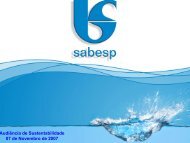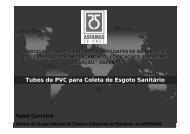Sustainability r e p o r t - Sabesp
Sustainability r e p o r t - Sabesp
Sustainability r e p o r t - Sabesp
Create successful ePaper yourself
Turn your PDF publications into a flip-book with our unique Google optimized e-Paper software.
Profit Sharing Program (PPR)By tying the PPR to BSC indicators we make sure <strong>Sabesp</strong> and our employees arealigned with the objectives and goals set at levels that will produce significantgains and results.In 2009, the set of PPR goals was extracted from our strategic planning, using theBSC, tying the Profit Sharing Program to <strong>Sabesp</strong>’s corporate steering.The 2010 profit share program goal set is divided into three groups:i. corporate goals, which depend on the entire company’s performance, such asEBITDA margin, net income, and number of ISO 14001 certified units;ii. goals set for core areas, which are tied to the activities of the operatingdepartments, such as customer satisfaction rate, maximum number ofoccupational accidents with leave of absence, number of sewage connections,wastewater treatment rate, and electricity consumption;iii. back office goals, used for the second consecutive year. These goals refer tothe corporative back office functions, such as IT, sourcing and legal affairs.Setting specific goals for the back office allows these employees to have adirect involvement in the effort to meet our strategic goals and support thework of the operating functions.Value Added Management (VAM)In 2009, we continued the implementation of the Value Added Managementmodel. We trained 485 employees in this methodology, totaling 692 employeessince the process started. Additionally, we completed the implementation ofthe Alto do Paranapanema Business Unit, an up-state pilot unit, and the SouthBusiness Unit, and we are completing the implementation of the Center BusinessUnit.The Value Added Management (VAM) model is crucial to steer actions relatedto the optimization our asset base and improve the quality of investments, tostrengthen <strong>Sabesp</strong> and its long-term sustainability. The challenge for 2010 isto complete the implementation of the VAM in all business units, as part of thepreparation of variable compensation proposal, pegged to value generation. Theobjective is to encourage and reward asset, expense and revenue managementimprovement efforts.Tenure for employee hired in 1988-89The decision of the Supreme Federal Court (STF) on the jobs of the employees whojoined <strong>Sabesp</strong> without passing a competitive recruitment process but based on a publicselection process. Most of these employees work in operating functions (about 1,000).With STF’s decision, which annuls the previous labor courts’ decision, it was possible toreassure these employees and, in particular, avoid an sudden, unplanned termination,not based on performance criteria, which might impair service continuity.Incentive to competition in <strong>Sabesp</strong>’s tender biddingsAs a semi-public corporation, we must use selective procurement procedures—constitutional requirement regulated by Law 8666/93—which entails offering thesame competition and participation conditions to all suppliers, regardless of theirlocation. We comply with this guarantee through the broad disclosure made by theelectronic tender bidding portal, on our website (www.sabesp.com.br).We were the first state-owned company and the second company in general toimplement an electronic procurement procedure. In addition to cutting costs, itprovides our suppliers and the population in general more transparency, efficiency,and agility. With a focus on the increase in competitions in auctions, we prepared aPublic Procurement Competition Guidelines manual.EC6 On the other hand, we also promote the participation and engagement oflocal suppliers, in the regions where we operate, from a decentralized structure,divided into business units, where each unit has its own budget and independenceto contract on a decentralized basis. In 2009, the participation of local suppliers inprocurements with waiver of tenders based on amount and invitation was 55 percent.As part of the compliance with broad subsidiary legislation on procurement, wegrant a differentiated treatment to micro or small businesses, and cooperatives, thusencouraging the participation and engagement of local suppliers.60 Relatório de Sustentabilidade 2009 61





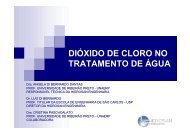

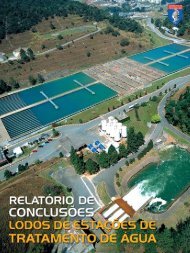


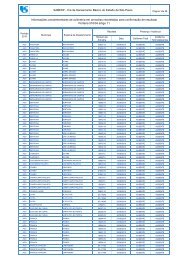
![MBBR ppt for Pulp&Paper, Sabesp, Oct 3, 2008 [Somente leitura]](https://img.yumpu.com/34976291/1/190x135/mbbr-ppt-for-pulppaper-sabesp-oct-3-2008-somente-leitura.jpg?quality=85)
